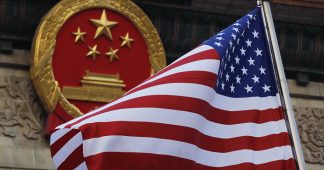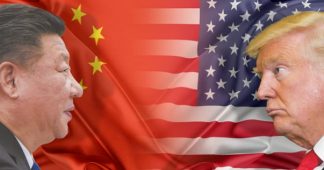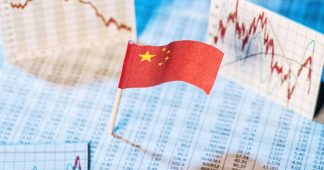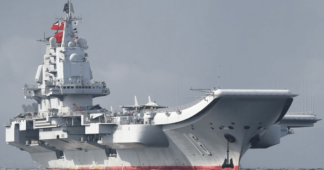by Regina Ip*
Jun 18, 2023
- A decade ago, John Kerry suggested a polarised US learn from China and boost domestic investment. Instead, Washington chose to target Beijing and stifle its rise
- It may be working – but slowing Chinese growth will cost the US and the rest of the world
When I was living in California in the 2000s, Americans noted that the Spring Festival was the only time when Chinese ports would close and indefatigable Chinese workers would take a prolonged break. Savvy online shoppers put in their Chinese orders well in advance.
That was soon after China joined the World Trade Organization. US-China trade boomed, and the impact on American life was immediate and visible. Shops overflowed with cheap Chinese imports. Americans filled their homes with staples from China. US inflation stayed low throughout the 2000s. Both countries benefited from open trade and investment.
The most popular Chinese in the United States was NBA player Yao Ming. The best-known Chinese artiste was Gong Li. China’s image was likened to that of the giant panda: lovable, non-threatening – and subservient to American needs.
Do you have questions about the biggest topics and trends from around the world? Get the answers with SCMP Knowledge, our new platform of curated content with explainers, FAQs, analyses and infographics brought to you by our award-winning team.
In 2009, after the subprime mortgage crisis in the US caused the world economy to nosedive into recession, Time magazine chose the Chinese worker as a runner-up to “Person of the Year”, and paid tribute to hardworking Chinese workers for their contribution to speeding up the global economic recovery.
Just as frailty invites compassion, strength can breed suspicion, paranoia and an urge to nip any challenge in the bud. The rise of China seems vulnerable to the “Thucydides trap” – a term popularised by Harvard professor Graham Allison in reference to the inevitability of war between established Sparta and a rising Athens in the fifth century BC.
That war was mutually destructive; and despite analysts saying that the US and China are not unavoidably destined for war, Washington seems increasingly convinced that suppressing the rise of China is its top priority.
It is not clear when exactly the US’ political elite started to view China as a threat. Early signs of a change emerged when the Obama administration started talking about “rebalancing” and a “pivot to Asia” after beginning to withdraw American troops from Afghanistan in 2011.
Some clues may be gleaned from a speech by senator John Kerry in January 2011, in which he warned the US was facing “another Sputnik moment”. He noted that developed and developing countries in other parts of the world, notably China, were pursuing spectacular paths of growth by investing in infrastructure, research and development, while the US was locked in paralysis and political polarisation.
He argued for the adoption of similar strategies of investing in new energy sources, education, infrastructure, technology and research.
Kerry’s advice fell on deaf ears; solving deep-rooted domestic problems takes time and often requires bitter medicine. Instead, Washington’s political elite embraced a revised “grand strategy” towards China, outlined in a report by diplomats Robert Blackwill and Ashley Tellis to the Council on Foreign Relations in March 2015.
The report recommended the adopting of targeted measures to balance “the rise of Chinese power rather than continuing to assist its ascendancy”. Convinced that China’s meteoric rise has benefited from the US’ open markets and advantages in technology, the report recommended a broad range of measures to restrict US trade, investment and tech transfers to China.
Specific proposals include forming trade alliances that exclude China, tightening control of hi-tech exports to China, strengthening the US naval and military presence in the Indo-Pacific, and forming security partnerships with Asian allies.
Convinced that the ballooning US trade deficit with China was the result of unfair trade, president Donald Trump triggered a trade war in March 2018, slapping tariffs on imports of steel and aluminium in a move seen as directed at China.
His administration’s view of China as a rising threat to US global leadership was laid bare in vice-president Mike Pence’s hard-hitting speech at the Hudson Institute in October 2018. In it, he accused China of using its political, economic and military tools to “advance its influence and benefit its interests in the US” – interfering in US politics, contesting US geopolitical advantages and, in essence, changing the international order.
Despite US President Joe Biden’s friendship with Chinese President Xi Jinping when they were both vice-presidents, there has been no let-up in the Biden administration’s effort to constrain China. Its national security strategy, and the repeated emphasis on national security first by cabinet officials, left no doubt that China is seen as the country with the intention and capacity to reshape the international order in its favour.
The administration followed closely the measures to stifle China’s growth recommended by Blackwill and Tellis, and took them to a tougher level.
It not only enacted the Chips and Science Act to cut off China’s access to advanced semiconductors, but coerced its allies into doing the same, roiling supply chains, closing markets and hurting profits.
The US’ strategy of consolidating its great power status by shutting out China seems to be working. China’s exports to the US dropped by 8.5 per cent in the first five months of this year with the trade surplus also narrowing by 14.5 per cent year on year.
Stifling trade, investment and China’s access to advanced technology is not helping the US to solve its myriad domestic problems, including one with vast global implications: its humongous fiscal imbalance.
US national debt is forecast to rise from 98 per cent of its gross domestic product this year to 195 per cent by 2053. China’s slow growth will affect the US and the rest of the world; given the vast US fiscal imbalance and a drying up of savings, it could easily trigger another global financial crisis.
Great power comes with great responsibility. Let’s hope US Secretary of State Antony Blinken’s visit to Beijing helps both powers find a way to peacefully coexist, for humanity’s sake.
* Regina Ip Lau Suk-yee is convenor of the Executive Council, a lawmaker and chairwoman of the New People’s Party
We remind our readers that publication of articles on our site does not mean that we agree with what is written. Our policy is to publish anything which we consider of interest, so as to assist our readers in forming their opinions. Sometimes we even publish articles with which we totally disagree, since we believe it is important for our readers to be informed on as wide a spectrum of views as possible.










